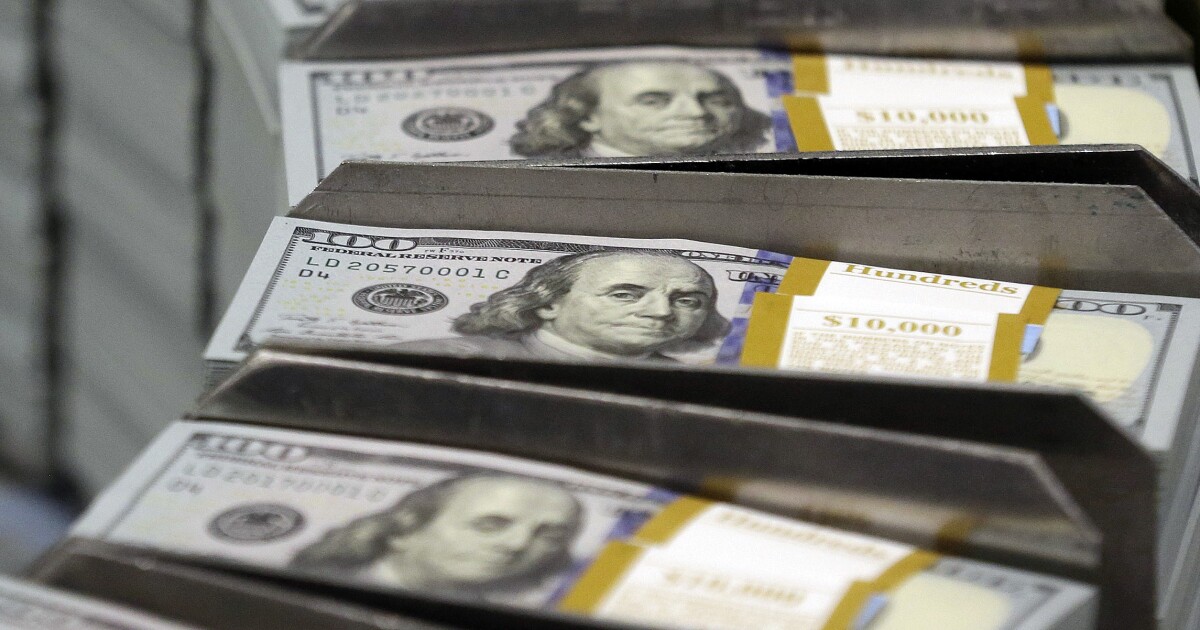

The Congressional Budget Office projected Wednesday that public debt will balloon to 107% of the country’s gross domestic product by 2029 and a whopping 181% by 2053.
The CBO, Congress’s nonpartisan group of budget experts, released its long-term projections on Wednesday. The new report highlights the magnitude of the fiscal challenges facing Congress and President Joe Biden.
UNIVERSAL BASIC INCOME PAYMENTS: HOW EXPERIMENTS SENDING PEOPLE MONEY HAVE WORKED OUT
“The United States faces a challenging fiscal outlook. If current laws generally remained unchanged, budget deficits and federal debt would grow in relation to gross domestic product over the next three decades,” the CBO said.
In addition to the longer-run predictions about how much debt will increase, by the end of this year, federal debt held by the public will equal 98% of GDP, according to the annual CBO report.
“Such high and rising debt would slow economic growth, push up interest payments to foreign holders of U.S. debt, and pose significant risks to the fiscal and economic outlook; it could also cause lawmakers to feel more constrained in their policy choices,” the CBO concluded.
Debt held by the public is projected to be 2% higher this year than the CBO previously forecast, although 9 percentage points lower in 2052 than before.
The report also noted spending as a percentage of GDP is expected to fall this year as the pandemic wanes, although after 2026 will pick up and rise to more than 29% of GDP by 2053. By comparison, from 1993 to 2022, spending averaged about 21% of GDP.
The budget office said that rising interest rates and large primary deficits will cause interest costs to nearly triple in relation to GDP over the next three decades. Additionally, healthcare and Social Security spending will balloon in the decades ahead as the population ages and healthcare costs grow.
Earlier this year, the CBO projected that the federal budget deficit will rise to $1.4 trillion in fiscal year 2023, larger than previously projected and a reversal of the decline in deficits over the past few years as pandemic emergency spending wound down.
The CBO noted that U.S. spending as a percentage of GDP is higher through 2029 than it was in last year’s projections, although it is set to be lower in the years after that than previously forecast. U.S. tax revenue in the latest projection is lower throughout the next three decades than predicted last year.
CLICK HERE TO READ MORE FROM THE WASHINGTON EXAMINER
The report also included forecasts for other crucial economic metrics. The country has been grappling with the worst inflation in decades, but the CBO now projects that inflation, as gauged by the personal consumption expenditures price index, will fall back to normal levels next year.
There are also fears that the Federal Reserve’s mission to raise interest rates and drive down inflation could result in a recession. The unemployment rate is currently at 3.7%, a historically low level. The CBO predicts that it will tick up to 4.7% by the end of this year before falling to 4.5% by the end of next year. In the longer run, the budget office expects 4.1% unemployment in 2053.





